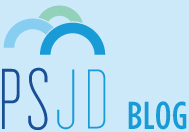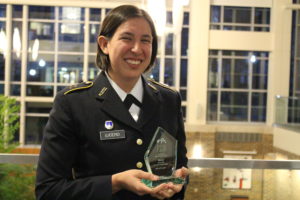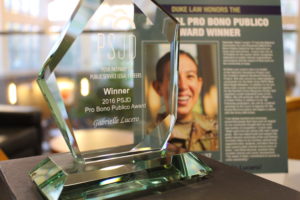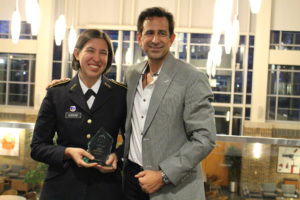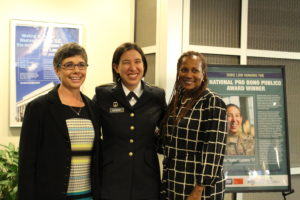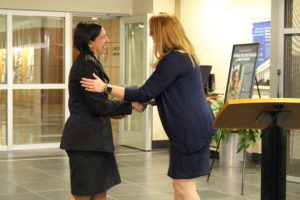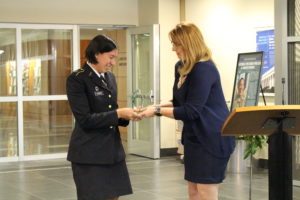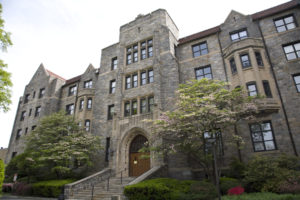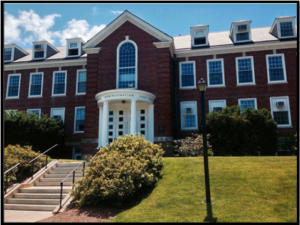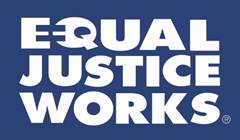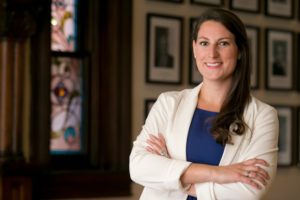
2016-17 Merit Distinction Honoree, Lilah Thompson
Every year, we honor law student pro bono with the PSJD Pro Bono Publico Award. Any 2L or 3L who attends a PSJD subscriber school and has significant pro bono contributions to underserved populations, the public interest community and legal education is eligible for nomination. This week, one of the 2016-17 PSJD Pro Bono Publico Award Merit Distinction honorees will be guest blogging about law student pro bono and her public interest commitments. (Check out last week’s guest blog by Merit Distinction honoree Derek Mergele, and next week award winner Gabrielle “Gabs” Lucero will be guest blogging on PSJD.) Today, we’re featuring Merit Distinction honoree and Temple University School of Law student Lilah Thompson, who co-created a workshop that simulated the life of a refugee.
Looking Between Borders to Understand the Refugee Experience
by Lilah Thompson, PSJD Pro Bono Publico Merit Distinction Honoree, 2016-2017 (Temple University School of Law)
A refugee is someone who has been forced to flee his or her country because of persecution, war, or violence. Of the 65.3 million people displaced worldwide 21.3 million are refugees. Over half of the world’s refugees are children. The number of refugees in the world is currently at the highest level ever recorded in human history. To fully understand the stories behind these staggering numbers, I worked with Professor Jaya Ramji Nogales to create Between Borders: A Refugee Simulation Experience. Between Borders is a participatory workshop that simulates the life of a refugee throughout all stages of the refugee process. This simulation is an awareness-building activity that places participants in the “shoes of a refugee” in order to conceptualize the experiences that they face. The simulation focuses on four important aspects: (1) why refugees flee; (2) how they are deemed refugees; (3) how refugees are screened and vetted; and (4) how they are welcomed to a new country.
Why do refugees flee?
Currently, 53% of refugees worldwide come from Syria, Afghanistan and Somalia. Every country’s conflict is different, which makes the reasons why refugees flee and each refugee’s journey different. For example, an estimated 11 million Syrians have fled their homes since the outbreak of the violent civil war in 2011. This includes over 4.8 million who have escaped to neighboring countries, thousands who have attempted to seek asylum in European countries, and over 6 million who remain internally displaced within Syria. While situations in countries facing mass displacement and flight are different, they share important commonalities, including violence, instability, and persecution.
How are individuals desginated as “refugees”?
In designing Between Borders, one important aspect for me was to define refugees accurately, by also making clear what they are not: terrorists or illegal immigrants. In order to be deemed a refugee, an individual must prove that they have a well-founded fear of persecution based on race, religion, nationality, political opinion or membership in a particular social group. Without falling into one of those groups, the individual is not provided protection as a refugee. Once registered and approved as a refugee, individuals reside in refugee camps where they wait until they can be firmly resettled in a third country, like the U.S. These temporary camps are typically situated in neighboring countries. The situation in refugee camps is dire; health care, food, employment opportunities and education are extremely limted.
How are refugees screened, vetted, and processed to come to the United States?
Under the U.S. Refugee Admissions Program (USRAP), an interagency process that includes three primary U.S. Government agencies—Department of State, Department of Homeland Security (DHS), and the Department of Health and Human Services (HHS)—refugees are vetted based on specific requirements. These requirements cannot be waived, and include an in-person DHS interview, security checks, and a medical exam. Due to these strict requirements, the process currently takes anywhere from 18 to 24 months, or even longer.Additionally, many refugees have to wait long periods of time to even be processed, and some wait in refugee camps for up to 20 years before being resettled in a third country.
How are refugees welcomed to a new country?
After being granted a visa and going through all security background checks, refugees finally arrive to the U.S. They are greeted at the airport by a caseworker who works for one of the U.S. private agencies that have cooperative agreements with the State Department to provide reception and placement services for arriving refugees. At this stage, a new struggle begins. Refugees have only 90 days of assistance from these agencies. In that time, they must sign up for English classes, get jobs, enroll children in school, go to health visits, set up their new homes, and obtain government-approved benefits. As the clock ticks, many refugees struggle to become self-sufficient within this three month time-frame.
Why is it important to understand the refugee journey?
It is essential to understand that refugees are just like anyone living in the U.S., except their lives have been torn apart by persecution and violence. The only difference between U.S. residents and refugees is chance. Imagine switching places with a Syrian child. She is sitting at her desk in school, and suddenly a bomb explodes two classrooms away. She scrambles through hallways trying to find her brother to see if he is okay. Together, they run home through the streets, hoping their parents are there. Her parents won’t allow her to go to school the next day, or the day after. Her fafther, a taxi driver, can no longer work, because no one is taking taxis. Instead, the taxis have been replaced with tanks. She wakes up, day after day, hearing bombs going off, and witnessing the loss of life in the streets. If we put ourselves in the shoes of this child, it is easy to comprehend why her and her family would flee. Why they would do anything in their power to seek safety and stability in the face of violence and uncertainty. As one participant in Between Borders commented: “There are unprecedented amounts of refugees and migrants in today’s world, but here in the U.S. they are ‘invisible’ to us … we need to appreciate the problems that cause refugees and migrants to take this journey and the challenges they faced along the way.”
What does it say about the United States when we turn our back on refugees?
It says that we do not understand. We cannot tell the difference between a refugee, who is fleeing terror, from a terrorist, who is the oppressor. It says that, even with all of the facts about what refugees face, and that they are screened and vetted more than any other individual who sets foot on U.S. soil, we do not care to help. It says that U.S. citizens deserve peace of mind over a refugee child’s safety from violence or death. My goal throughout law school has been to educate individuals about refugees and asylum seekers. Not simply about their legal claims, but about our moral obligation to understand.
The most recent executive order that targets refugees is immoral and a violation of our human rights obligations. But, most importantly, it is misinformed. The goal of Between Borders is to broaden awareness and understanding, and allow that to influence how we treat and understand other human beings. In the face of misinformation, if we can come together as a community to better understand the refugee journey and learn about the refugee process then surely we can change the hearts and minds of others.
